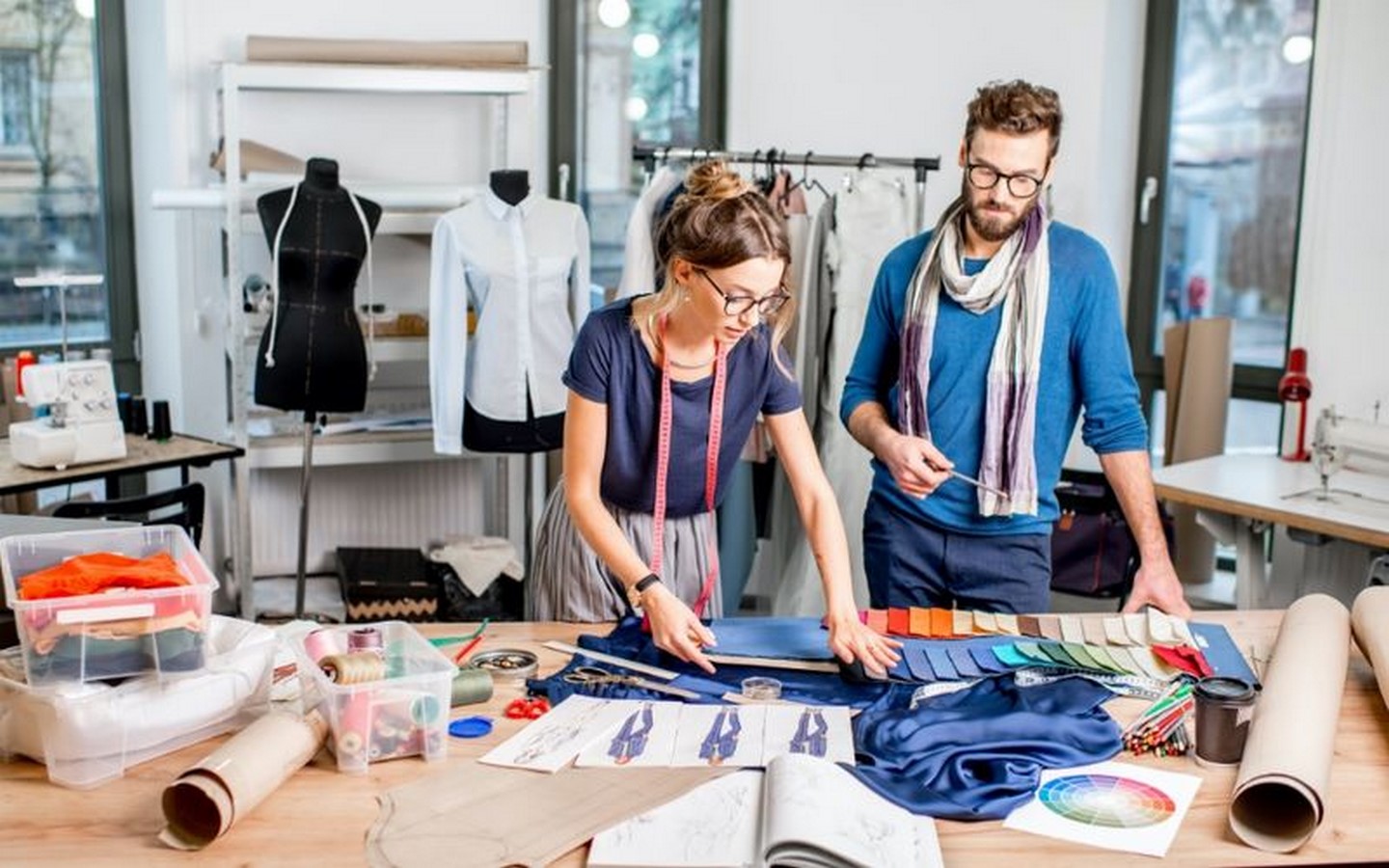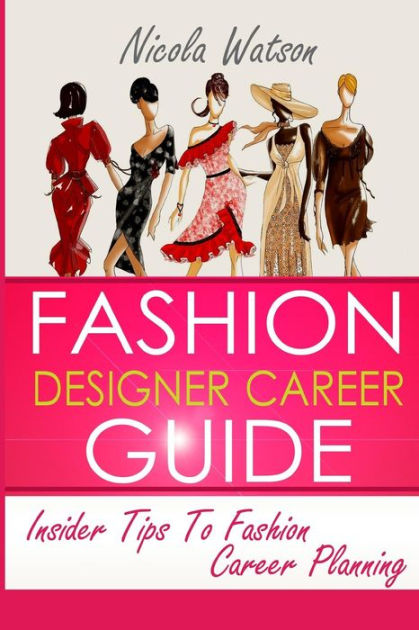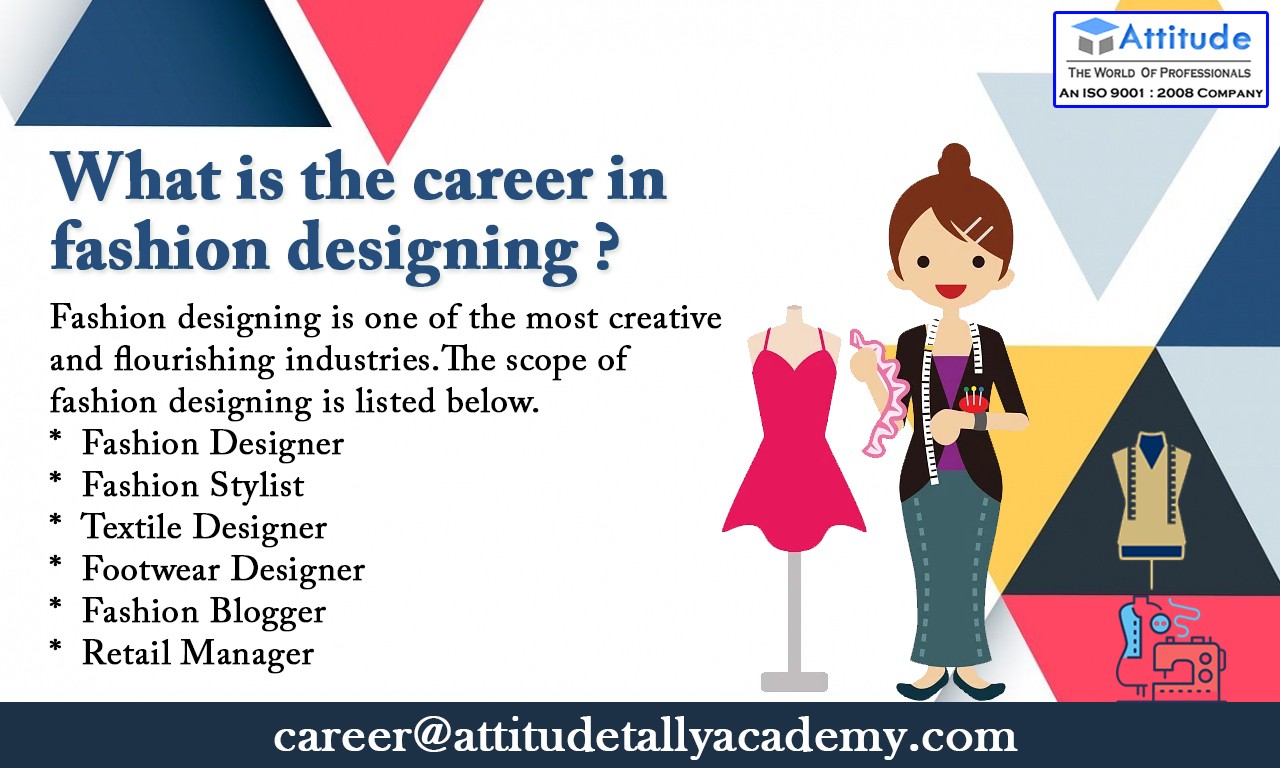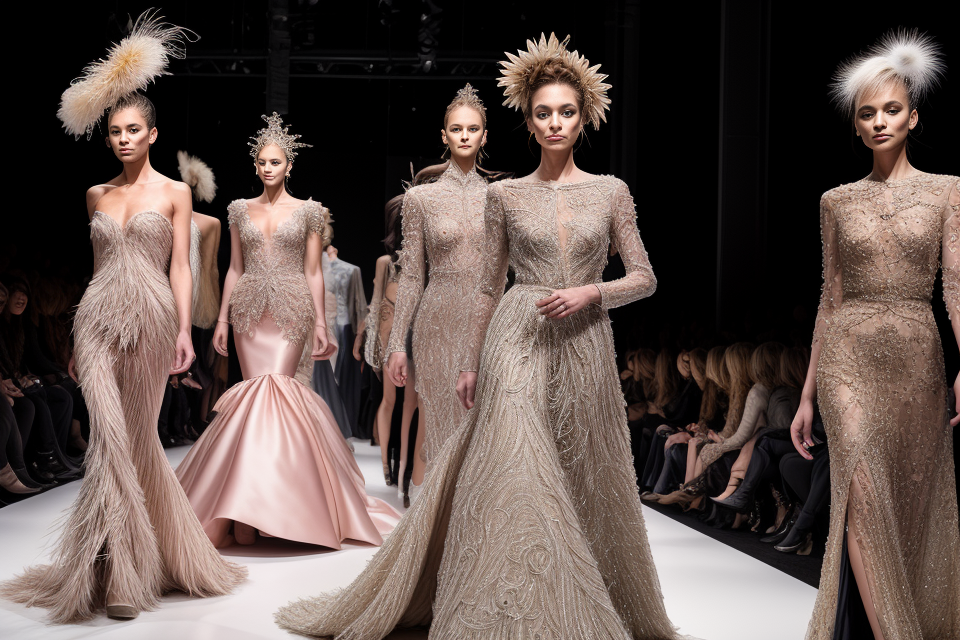A Comprehensive Guide to Fashion Design Careers: Exploring the Diverse Landscape of Creative Expression
Related Articles: A Comprehensive Guide to Fashion Design Careers: Exploring the Diverse Landscape of Creative Expression
Introduction
In this auspicious occasion, we are delighted to delve into the intriguing topic related to A Comprehensive Guide to Fashion Design Careers: Exploring the Diverse Landscape of Creative Expression. Let’s weave interesting information and offer fresh perspectives to the readers.
Table of Content
A Comprehensive Guide to Fashion Design Careers: Exploring the Diverse Landscape of Creative Expression

The world of fashion design offers a vibrant and dynamic career path for individuals passionate about creativity, aesthetics, and the art of clothing. It is a field that seamlessly blends artistic vision with technical expertise, demanding a unique blend of skills and knowledge. This guide delves into the diverse landscape of fashion design careers, providing a comprehensive overview of the various roles and opportunities available.
The Allure of Fashion Design:
The appeal of fashion design lies in its ability to translate ideas into tangible expressions of style, impacting individuals and society at large. Fashion designers are storytellers, weaving narratives through fabric, silhouette, and color. They shape trends, influence aesthetics, and contribute to the ever-evolving language of fashion.
Navigating the Fashion Design Landscape:
The fashion industry encompasses a wide range of specializations, each demanding distinct skills and expertise. Understanding these specializations is crucial for aspiring fashion designers to identify their niche and chart their career path.
1. Fashion Designer:
This is the quintessential role within the fashion industry. Fashion designers are responsible for creating original designs, developing concepts, and translating their vision into tangible garments. They work across various stages of the design process, from sketching initial concepts to collaborating with pattern makers and tailoring teams to bring their creations to life.
Specializations within Fashion Design:
- Ready-to-Wear: This encompasses the design of clothing for mass production and retail. Designers in this field focus on creating wearable, stylish garments for everyday wear, catering to a wide range of consumers.
- Haute Couture: This prestigious sector focuses on creating bespoke, high-end garments for individual clients. Haute couture designers are renowned for their exquisite craftsmanship, meticulous attention to detail, and exceptional tailoring skills.
- Men’s Fashion: This specialization caters specifically to the male market, focusing on the design of menswear, ranging from casual wear to formal attire.
- Women’s Fashion: This specialization encompasses the design of clothing for women, encompassing various styles and categories, from everyday wear to evening gowns.
- Children’s Fashion: This specialization focuses on the design of clothing for children, incorporating playful elements and considerations for comfort and practicality.
2. Textile Designer:
Textile designers play a crucial role in the fashion industry by creating innovative and visually appealing fabrics. They experiment with different fibers, weaves, prints, and dyeing techniques to develop unique textiles that enhance the overall design and aesthetic of garments.
3. Pattern Maker:
Pattern makers are skilled professionals who translate fashion designers’ sketches and technical specifications into precise patterns used for garment construction. They possess a deep understanding of garment construction and possess the ability to create accurate patterns that ensure a perfect fit and drape.
4. Fashion Stylist:
Fashion stylists are responsible for curating and presenting clothing, accessories, and overall looks for various purposes, including photoshoots, fashion shows, and editorial features. They have a keen eye for detail, a strong understanding of fashion trends, and the ability to create cohesive and visually compelling outfits.
5. Fashion Illustrator:
Fashion illustrators are artists who translate fashion designs into visual representations. They possess strong drawing skills, a keen eye for detail, and the ability to capture the essence of a garment’s silhouette, texture, and overall aesthetic.
6. Fashion Journalist:
Fashion journalists are writers who report on fashion trends, industry events, and the work of designers. They possess strong writing skills, a deep understanding of the fashion industry, and the ability to critically analyze and interpret fashion trends.
7. Fashion Blogger:
Fashion bloggers are individuals who share their passion for fashion through online platforms, writing about trends, styling tips, and personal style. They have a strong understanding of social media, a keen eye for fashion, and the ability to engage and connect with their audience.
8. Fashion Merchandiser:
Fashion merchandisers are responsible for the planning, buying, and selling of fashion products. They analyze market trends, identify customer needs, and make strategic decisions about product selection and inventory management.
9. Fashion Buyer:
Fashion buyers are responsible for selecting and purchasing merchandise for retail stores or online platforms. They have a keen eye for trends, a strong understanding of the fashion market, and the ability to negotiate with suppliers and secure the best deals.
10. Fashion Consultant:
Fashion consultants provide expert advice to individuals or companies on fashion-related matters. They may assist with personal styling, wardrobe planning, brand development, or market research.
The Importance of Education and Training:
A successful career in fashion design requires a strong foundation in design principles, technical skills, and industry knowledge. Formal education plays a crucial role in equipping aspiring designers with the necessary skills and credentials.
Educational Options:
- Bachelor’s Degree in Fashion Design: This is a common starting point for aspiring fashion designers, providing a comprehensive curriculum covering design principles, pattern making, garment construction, textiles, and industry trends.
- Associate’s Degree in Fashion Design: This program offers a more focused curriculum, providing a foundation in design principles and technical skills.
- Fashion Design Certificate Programs: These short-term programs provide specialized training in specific areas of fashion design, such as pattern making, draping, or fashion illustration.
- Fashion Design Schools: Many specialized fashion schools offer intensive programs that focus on practical skills and industry connections.
Beyond Formal Education:
- Internships: Internships provide invaluable hands-on experience, allowing aspiring designers to work alongside experienced professionals and gain practical knowledge of the industry.
- Workshops and Masterclasses: These programs offer specialized training in specific areas of fashion design, such as textile design, pattern making, or fashion illustration.
- Networking: Building a strong network of contacts within the fashion industry is essential for career advancement. Attending industry events, connecting with professionals on social media, and joining professional organizations can help build valuable connections.
FAQs on Fashion Design Careers:
Q: What are the essential skills for a successful fashion design career?
A: Essential skills include creativity, artistic vision, technical skills (pattern making, garment construction, draping), knowledge of textiles, color theory, fashion history, trend analysis, communication skills, and the ability to work effectively in a team environment.
Q: What are the typical job responsibilities of a fashion designer?
A: Typical responsibilities include:
- Developing original design concepts
- Sketching and creating design presentations
- Collaborating with pattern makers and tailoring teams
- Selecting fabrics and trims
- Overseeing garment construction
- Presenting designs to clients or buyers
- Staying abreast of fashion trends and market research
Q: What are the salary expectations for fashion designers?
A: Salaries for fashion designers vary widely depending on experience, specialization, location, and the size and reputation of the company. Entry-level positions may offer salaries in the range of $30,000 to $50,000 per year, while experienced designers can earn significantly more.
Q: What are the challenges of a fashion design career?
A: Challenges include:
- Competitive industry: The fashion industry is highly competitive, requiring dedication, talent, and resilience.
- Long hours and demanding deadlines: Fashion designers often work long hours, especially during peak seasons, to meet tight deadlines.
- Constant pressure to stay ahead of trends: The fashion industry is constantly evolving, requiring designers to be adaptable and innovative.
Tips for Aspiring Fashion Designers:
- Develop a strong portfolio: Showcase your best work, demonstrating your design skills, creativity, and technical proficiency.
- Network with industry professionals: Attend industry events, connect with professionals on social media, and join professional organizations.
- Stay informed about fashion trends: Read fashion magazines, attend fashion shows, and follow industry blogs to stay abreast of current trends.
- Gain practical experience: Seek out internships or freelance opportunities to gain hands-on experience and build your skills.
- Develop strong communication skills: Effective communication is essential for collaborating with clients, suppliers, and team members.
- Be persistent and resilient: The fashion industry can be challenging, so it’s important to be persistent and resilient in pursuing your goals.
Conclusion:
A career in fashion design offers a rewarding path for individuals with a passion for creativity, aesthetics, and the art of clothing. It is a field that demands a unique blend of skills, knowledge, and dedication. By pursuing formal education, gaining practical experience, and staying informed about industry trends, aspiring fashion designers can position themselves for success in this vibrant and dynamic industry. The world of fashion design is a canvas for creative expression, where individuals can translate their visions into tangible expressions of style, influencing aesthetics and shaping trends for generations to come.







:max_bytes(150000):strip_icc()/fashion-designer-526016v1sf-edit-39120137a4254a9e9bd49155d20499aa.jpg)
Closure
Thus, we hope this article has provided valuable insights into A Comprehensive Guide to Fashion Design Careers: Exploring the Diverse Landscape of Creative Expression. We appreciate your attention to our article. See you in our next article!
